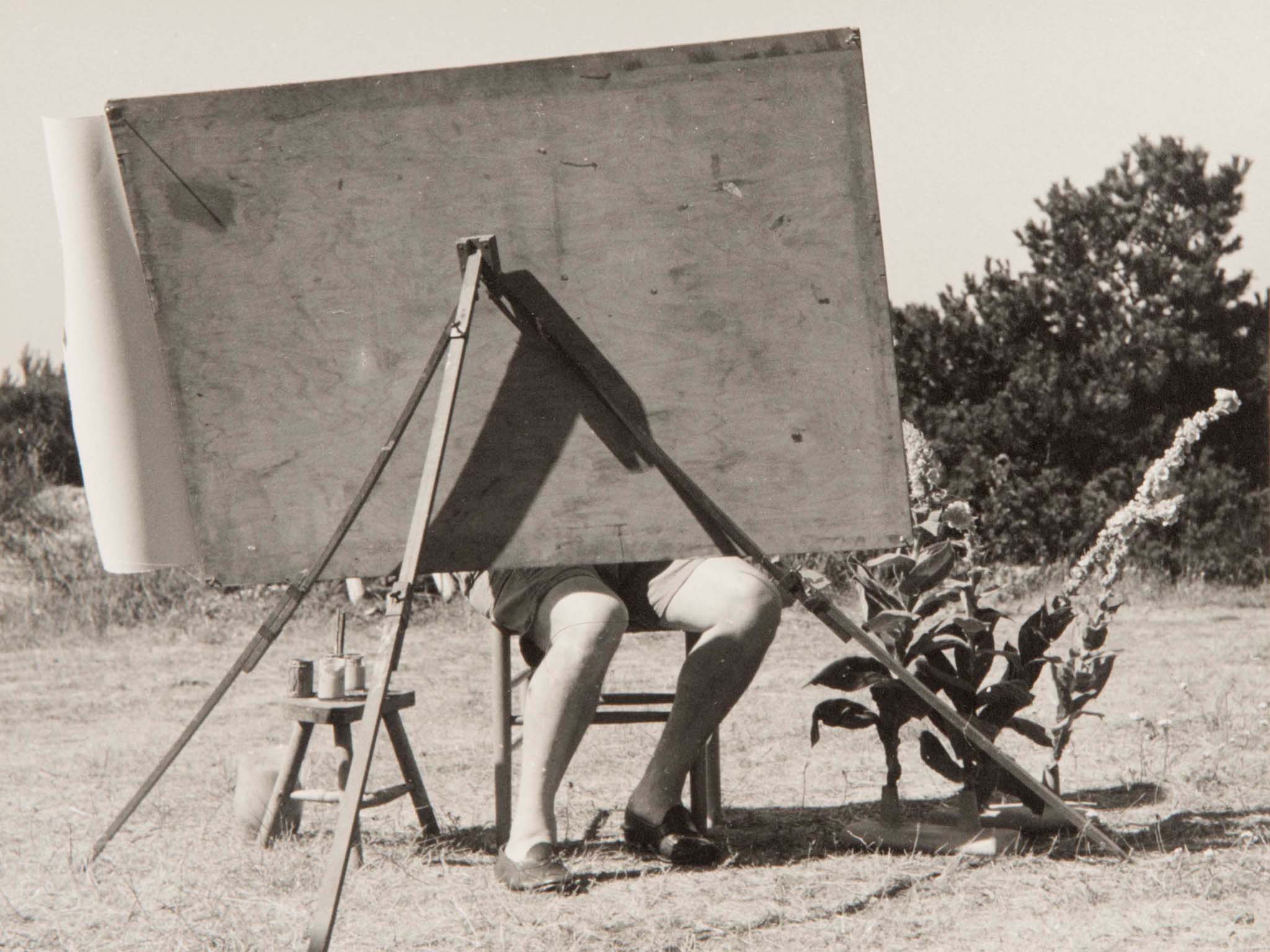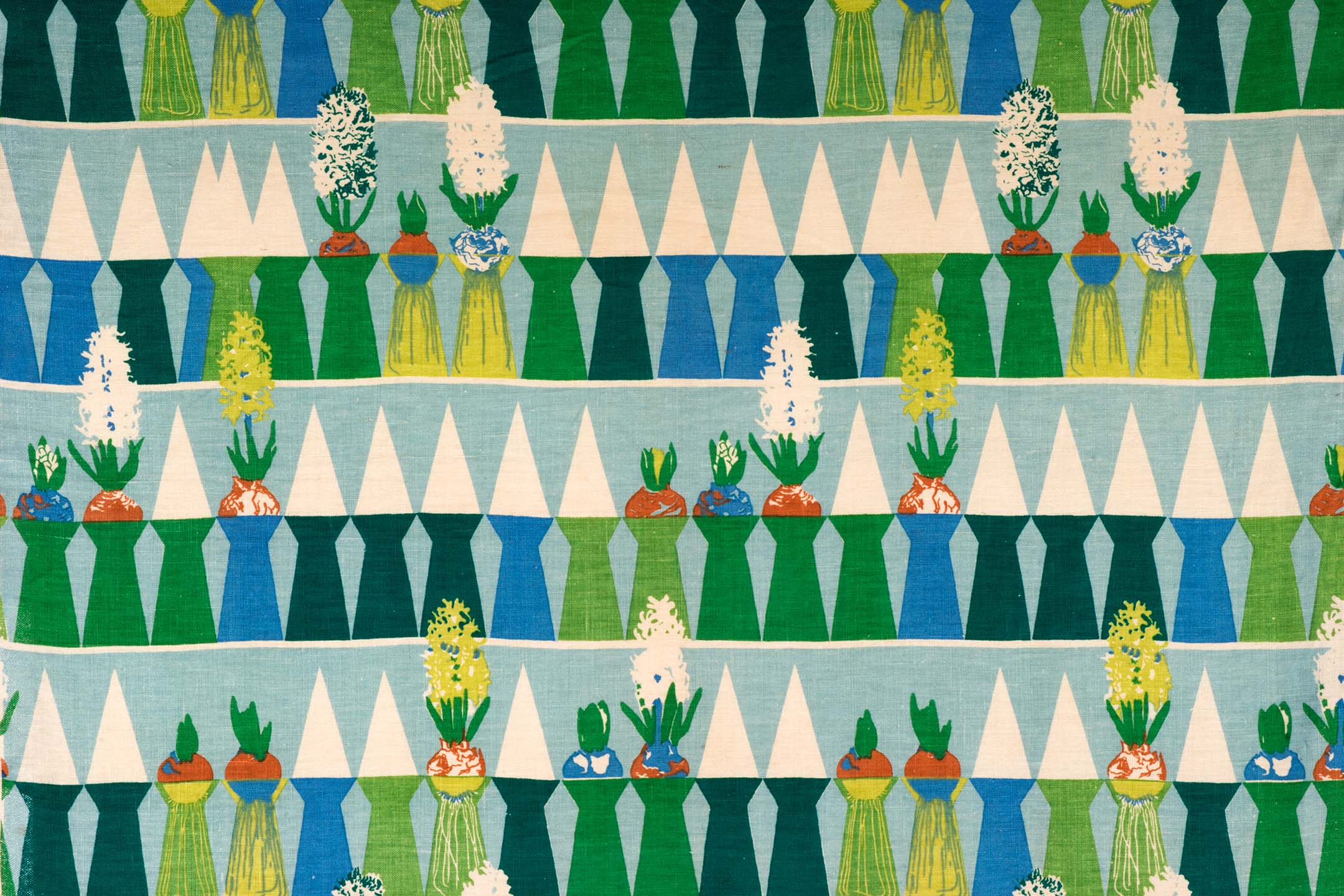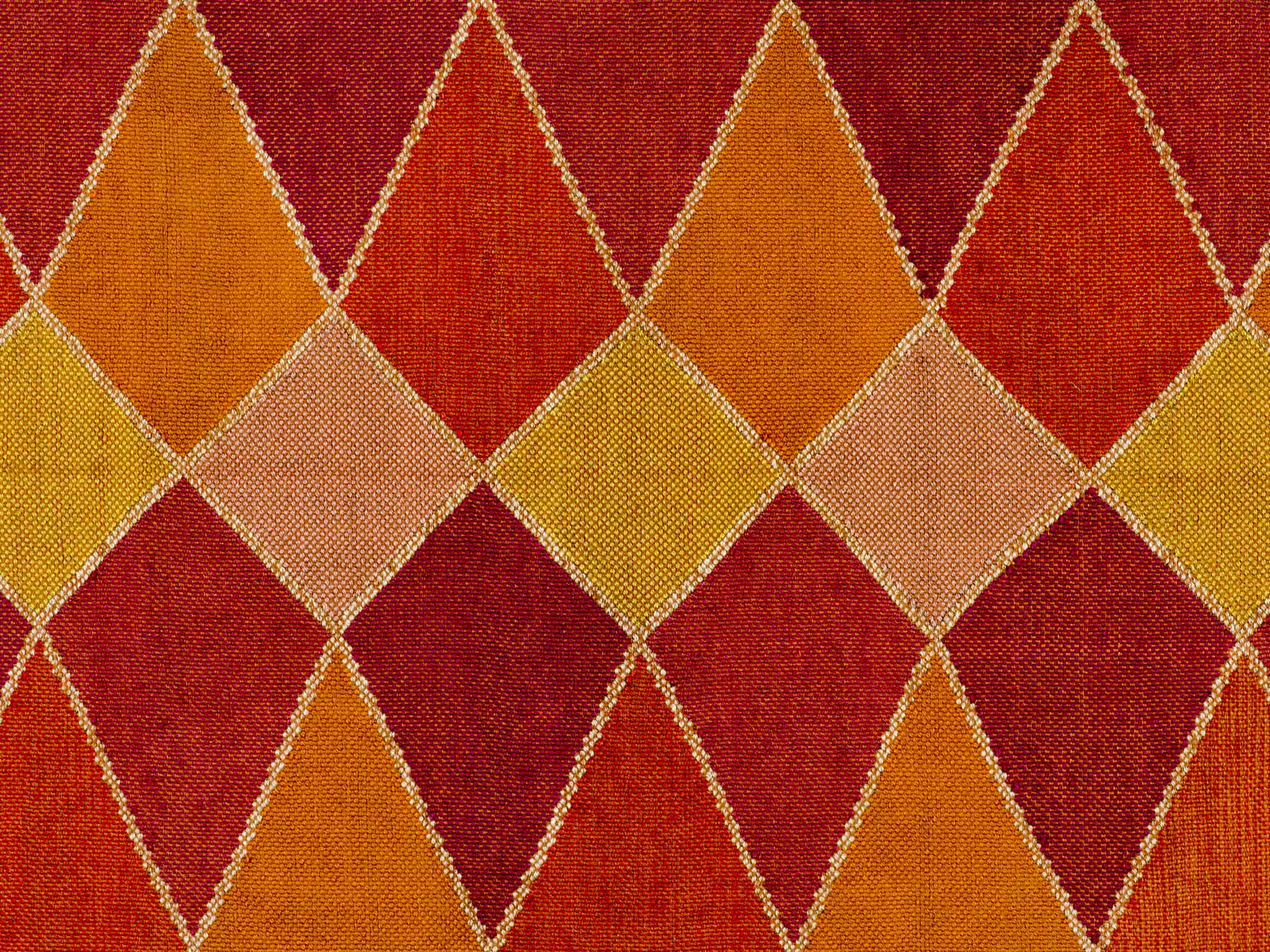From the early 1940s and throughout his war-time exile in Sweden, Arne Jacobsen created patterns for textiles and wallpapers based on lush, naturalist plant motifs. In these patterns, we encounter the artist and the botanist rather than the stringent modernist that Arne Jacobsen is often perceived as. Based on nature studies in the Swedish landscape, in his garden or in the area around his summer cottage at Gudmindrup Lyng, Arne Jacobsen created a series of plant patterns with an original and personal expression.
In the early 1940s, he had met Jonna Jacobsen (née Møller) (1908-1995), who was a trained textile printer and who helped him translate his drawings and watercolours into printable patterns. They married in 1943, shortly after they had fled to Sweden from German-occupied Denmark. Many of his most lush and vibrant patterns date from his time in Sweden.







